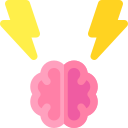Today’s Theme: Digital Therapeutics for Mental Wellness
Chosen theme: Digital Therapeutics for Mental Wellness. Explore how evidence-based, app-delivered interventions can support your emotional health, complement therapy, and help you build resilient habits—one thoughtful, data-informed step at a time.
From wellness apps to prescribed care
Not all apps are created equal. Digital therapeutics are designed with clinical rigor, often prescribed by clinicians, and target specific conditions like anxiety, depression, or insomnia, using structured programs rather than general tips.
Evidence that builds trust
DTx programs are evaluated in studies that examine outcomes like reduced symptoms and improved functioning. This evidence base helps you—and your care team—choose tools confidently, knowing they are purposeful, transparent, and responsibly designed.
A shared language with your clinician
Because DTx track practice and outcomes, you gain a shared vocabulary with your clinician. Together, you can translate daily micro-moments into meaningful insights that guide treatment choices and celebrate steady, authentic progress.
Getting Started: Choosing and Setting Up Your DTx
Write one clear outcome you want, like falling asleep faster or easing social anxiety. Specific intentions help you pick a DTx program that matches your needs and keeps motivation grounded in what matters to you personally.
Inside the Methods: CBT, Mindfulness, and Beyond
01
You’ll practice noticing thoughts, testing them kindly, and experimenting with new behaviors. Interactive prompts help you catch distortions in the moment, transforming spirals into small experiments that restore confidence through lived experience.
02
Brief, guided practices help you come back to breath and body. Over time, check-ins reveal patterns: when distractions peak, which anchors help, and how awareness shifts your day from automatic pilot to intentional presence.
03
For fears and avoidance, graded exposure modules break challenges into steps. With preparation, reflection, and debriefs, you approach rather than flee, learning—gently and repeatedly—that courage grows when discomfort is met with care.
Stories from the Journey
Mara dreaded crowded mornings. Her DTx suggested a two-minute breathing exercise and a reframing prompt before the bus arrived. Over weeks, those tiny rituals transformed panic spikes into manageable jitter, and she started greeting the driver.
Stories from the Journey
Jon tracked sleep windows and practiced CBT-I modules. The app nudged consistent wake times and wind-down cues. After setbacks and a vacation hiccup, he noticed earlier sleepiness, fewer 3 a.m. scrolls, and energy returning for morning walks.


Habit stacking and tiny wins
Pair sessions with everyday moments: tea brewing, dog walks, train rides. Celebrate two-minute practices. Small, reliable actions build confidence and keep momentum alive on days when energy is thin and self-criticism wants the mic.
Curate your notification diet
Set reminders you’ll actually welcome—gentle tones, respectful timing, and fewer pings. Silence nonessential alerts during deep work. Let the app invite, not demand, so you remain in charge and engagement stays curious, not compulsory.

Bring useful snapshots to appointments
Export recent trends, practice frequency, and key reflections. Ask your clinician which metrics matter most and why. Together, translate patterns into next steps, adjusting goals so therapy feels collaborative, grounded, and genuinely hopeful.

Shared decisions, clear boundaries
Discuss how data will be used, how often to review, and what to do if distress spikes. Clear plans reduce uncertainty and keep engagement aligned with your values, capacity, and evolving life context beyond the screen.


What’s Next: The Future of Digital Therapeutics
Expect adaptive coaching that respects consent and limits. Algorithms can suggest timing, tone, and techniques that fit your rhythms, while transparent controls keep you informed, empowered, and comfortable with how your data supports care.
What’s Next: The Future of Digital Therapeutics
Virtual and augmented reality can rehearse feared scenarios with safety rails. Imagine practicing public speaking in a simulated room, then debriefing insights that translate into confident steps in the real world the next week.
